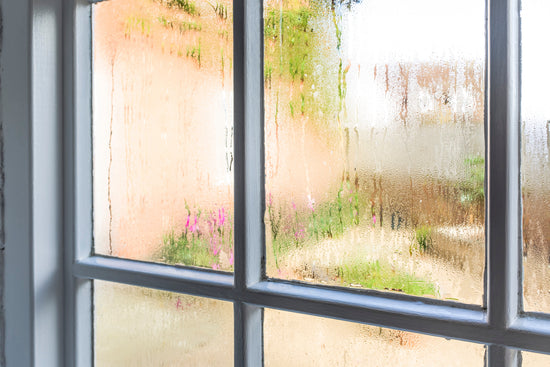Mold in your home threatens the health of your entire family and the structural integrity of your house. If it's not spotted and dealt with early, it can cause serious long-term problems.
Learn how to identify mold, why it's smart to partner with a pro, and how to prevent future mold infestations.
Why Mold in Your Home Is a Problem
According to the Environmental Protection Agency, mold is a fungus that reproduces through microscopic spores, which waft through the air and settle on surfaces throughout the home. These airborne spores can also enter your lungs when you breathe and are easily transported into every area of the home thanks to HVAC systems that recirculate indoor air.
Left unchecked, one area of mold could turn into a full-blown mold infestation, especially if the home remains damp and poorly lit. Mold will also "eat" the material on which it grows — a process that can weaken the structure of your home.
Symptoms of Mold Exposure
Breathing in mold spores can make you feel like you're coming down with a cold or experiencing an allergy flare-up or asthma-like symptoms. According to the Centers for Disease Control and Prevention, specific symptoms of mold exposure include:
- Watery eyes
- Runny nose
- Itchy throat
- Headache
- Fatigue
- Coughing or wheezing
Unlike cold or allergy symptoms, mold and mildew symptoms will dissipate after you remove yourself from the moldy environment. For example, if you feel great at work but start to feel "stuffy" and fatigued once you're home, hidden mold could be the culprit.
Signs of Mold in Your House
In addition to feeling the physical symptoms of mold exposure, watch for other signs of mold in your house. Confirm your suspicions with a professional mold test, which can tell you exactly what kind of mold is in your home and how bad the infestation is.
A Persistent Musty Smell
A musty, earthy, or damp smell is one of the most obvious signs of mold or mildew in a house. If you walk into your home or a specific room and get hit with an unpleasant smell, mold could be the source. It will seem like the smell comes from everywhere rather than getting noticeably stronger closer to the source. The smell will also come back despite efforts to mask it with fragrances or dilute it with fresh air from outside.
Dark Spots on Ceiling, Wall or Grout
Mold typically looks black, dark brown or dark green. It starts as small, barely perceptible spots that spread over time. Typically, the spots coincide with areas damaged by water, such as a ceiling that became wet from a leaky roof or a wall that absorbed moisture after a flood. The grout between shower tiles can also turn dark due to mold.

A "Stain" That Keeps Getting Larger
Sometimes mold is mistaken as a stain on the wall, ceiling, or floor. But this stain has no obvious source (such as a water leak) and continues to grow outward. It's often surrounded by smaller "stains" too.
Peeling Wallpaper or Cracked Drywall
Peeling wallpaper, cracked drywall, and bowed plaster all point to possible water damage. And where there's water in a home, mold will often follow.

What to Do if You See Signs of Mold in Your Home
Don't panic if you notice the signs of mold in your home. Mold and mildew are more common than you realize, and mold remediation services don't have to break the bank.
Dealing with mold is a two-step process. First, you have to correct the conditions that allowed mold to flourish in the first place. This usually means a water leak needs to be repaired. Second, you need to kill the existing mold.
It's tempting to enthusiastically remove and replace all materials in the home that have noticeable mold growth on them, but this can be expensive and unnecessary. It can even exacerbate the problem by allowing even more mold spores to go airborne. Spraying mold killer tends to have the same effect.
In contrast, professional mold remediation services diffuse a fungicide throughout the entire home that kills mold and prevents it from coming back. Then, the damaged material can be safely removed. If you can afford this long-lasting solution, it's definitely the way to go.
Preventing Mold From Returning
Mold won't gain a foothold in your home if there are no dark, damp and warm areas for it to flourish. Immediately correct water leaks, and consider installing a water leak sensor like Notion in areas of your home you rarely visit, such as a guest bathroom, to help you catch leaks quickly. Use a mold-inhibiting product like Killz when painting over water stains after repairing the leak. Remove carpeting in mold-prone areas.

Also, pay attention to the overall humidity in your home, which can cause mold to appear in surprising areas such as the wall behind a couch or in the folds of a curtain. A dehumidifier can help. Finally, if your family is particularly sensitive to mold spores, invest in a HEPA air filter.
Discovering mold or mildew in your home can be a cause for concern, but it doesn't need to become a major problem or huge expense. Take steps today to make sure your home and health are protected.





